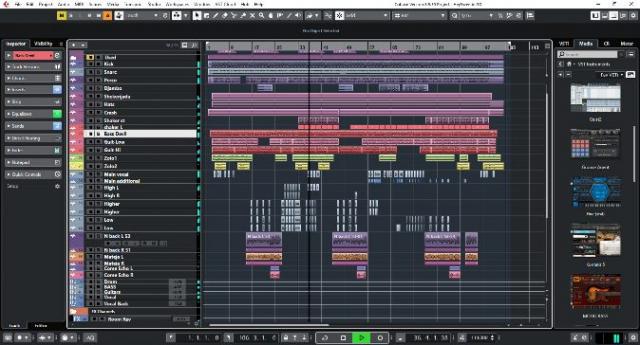

- #HOW TO ADD KONTAKT LIBRARY TO CUBASE 9 PRO SOFTWARE#
- #HOW TO ADD KONTAKT LIBRARY TO CUBASE 9 PRO CODE#
- #HOW TO ADD KONTAKT LIBRARY TO CUBASE 9 PRO WINDOWS#
I'm up to date on all omnisphere software, soundsources, & patches and have been experiencing crashes in Cubase 9.5 on Windows 7.
#HOW TO ADD KONTAKT LIBRARY TO CUBASE 9 PRO CODE#
Click the GENERATE button in the Keygen and copy the code that appeared from the bottom of the window. Copy the Challenge Code, which will appear in Omnisphere and paste it into Keygen in the Challenge Code line.
#HOW TO ADD KONTAKT LIBRARY TO CUBASE 9 PRO SOFTWARE#
This opens up a whole load of new creative possibilities, especially when coupled with the recent improvements to Cubase’s automation tools.Founded in 1994, Spectrasonics is a leading innovator of world-class, award-winning virtual instrument software plug-ins, used by the top recording artists, producers, remixers and film composers on the planet. Whilst Sampler Tracks offer no in-built LFO or modulation beyond the fixed-destination ADSR envelopes, all control movements can be written, read and edited as standard track automation data. Additionally, Cubase comes with a large library of Sample Track presets (and associated samples) called Caleidoscope.

If dragging from the project window you can drag an audio part or a MIDI part from an Instrument Track (Cubase bounces the MIDI part to audio before assigning it to the Sampler Track).Ī Sample Track’s settings are saved as part of a project file, but you can also save the sampler’s setup as a preset so that it can be easily reused in other projects. At the bottom of the panel there is a keyboard graphic showing the root note and note range of the assigned sample.Īssigning a sample to the track is a simple matter of dragging-and-dropping from the project window or Media Browser to the Sampler Track control panel. In the middle of the panel is a set of self-explanatory controls, grouped in sections for AudioWarp (i.e. The upper portion of the panel shows the currently assigned sample’s waveform along with start, end and loop markers the same area can be switched to show the pitch, filter or amp envelopes.
When you create a new Sampler Track, or select an existing one in the track list, the bottom zone of the project window shows the sampler control panel. And lots of it! Working with Sampler Tracks The main thing one needs to appreciate about Sampler Tracks is that they aren’t intended as a replacement for a full-featured sampler plug-in like Kontakt or HALion: you can’t create zones/key groups for assigning different samples across the keyboard, nor can you create velocity-switched stacks of samples.Īside from hard-wired ADSR envelopes for pitch, filter and amp, there are no LFOs or other modulation sources there are no built-in effects, no fancy scripting facilities… but what there is – in the true spirit of the Mirage – is immediacy.

However, rather than a user-selectable plug-in, Sampler Tracks generate their audio by feeding the track’s MIDI data through a simplified, HALion-based, sampler engine. Sampler Tracks are in many ways similar to Instrument Tracks in that the track records MIDI data but outputs audio. Until, that is, Steinberg added Sampler Tracks to Cubase. This ability was unique at the time, and remains elusive even now – arguably more so since the advent of powerful, but complex software samplers. To explain this we need consider just one word: Immediacy.īecause, you see, the Mirage’s real party trick was the ease and rapidity with which it allowed you to record and synthesise a sound, and end up with a usable and characterful result. Whilst this affordability may explain the initial appeal and success of the Mirage, it doesn’t explain why an instrument that’s almost laughably primitive by modern standards can nevertheless evoke a wistful, misty-eyed admiration to this day. Upon its 1985 release, the Ensoniq Mirage sampler massively undercut the price of the then competition – chiefly the E-mu Emulator, the Fairlight CMI and the Synclavier.ĭespite being a less powerful system than these established competitors, the Mirage’s comparative affordability – $1,500 as opposed to between $25,000 and $200,000 for a Synclavier II, for example – brought digital sampling within reach of a much larger number of producers and musicians, and in so doing laid the groundwork for the explosion of electronic music through the 90s and beyond.


 0 kommentar(er)
0 kommentar(er)
